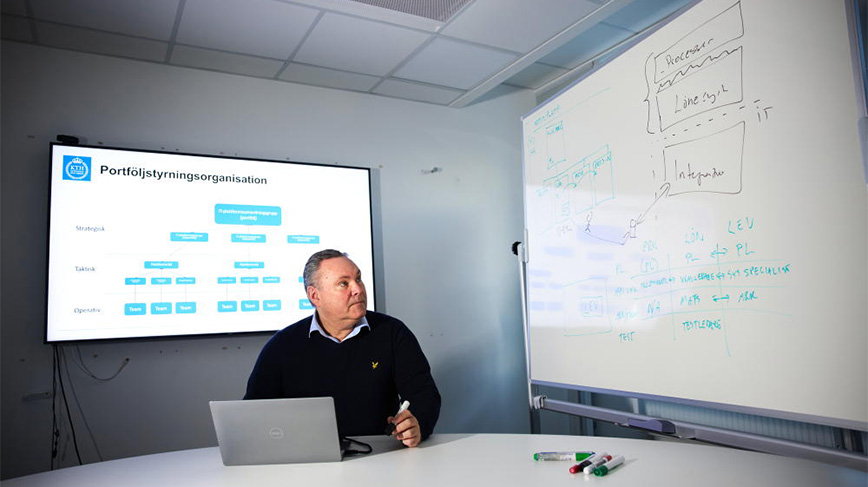New model for speeding up IT development

You can have any number of IT-systems that are as good as any you could ask for in an organisation. But that will be of little benefit if IT development as a whole is not managed in a long-term, coordinated and systematic way.
This is one of the fundamental thoughts behind the newly resolved portfolio management of IT development that should make the direction and prioritisation of digitalisation at KTH that much easier and give it further momentum.
“By obtaining a complete picture of which different projects and needs there are in the organisation, we can more easily see where we should develop, discontinue, and coordinate development, and what the possible bottlenecks are,” says Hans Wohlfarth, Head of IT at KTH with responsibility for coordinating portfolio management.
Changing the way you work
In the absence of a complete picture, in a large and multifaceted organisation such as KTH, different systems can be developed for users without being synchronised with each other. This can make usage more difficult and in the worst instance, it will also be a waste of resources.

“Support should be based on needs and know-how. Rather than being a kind of box that sits alongside the main systems, digitalisation is a pure operational development of the ways in which we work and our support functions,” says Wohlfarth.
Over time, this will influence the way KTH employees will work in the future.
“You could say that we aim to lay the foundations for and building a new flow oriented way of working where everyone who is involved in a system or a project work together. Fewer downpipes and more cross-function work is the idea,” says Wohlfarth.
Linked to the strategy
The next step in development work is to produce an overall digitalisation strategy, snap up resources, know-how planning and to work closely with users systematically. We also need a general approach to dealing with obstacles, such as when key issues fall between two stools as individual projects are not always able to deal with these within their own organisation. This work should be pursued on a broad front via different steering groups that continuously synchronise with each other.
Jan Gulliksen, Vice President for Digitalisation, also explains that KTH’s digitalisation strategy is closely linked to portfolio management.
“It is basically about how we should take advantage of the technology in the best ways across the whole of KTH and within all its operations. Working systematically with portfolio management forms a natural and important part of this.
Gulliksen is developing KTH’s digitalisation strategy in consultation with the University Director, and this is expected to be completed by the summer.
Words: Jill Klackenberg